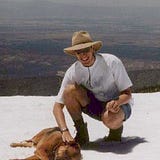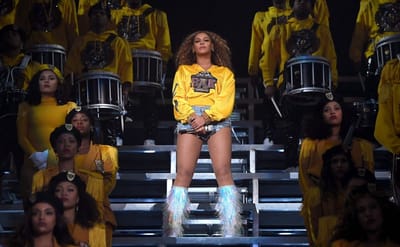20 Years Ago Today

One day in the Spring of 1995, just a few months before I finished my undergrad degree a friend in the student computer lab leaned over my machine and said “check this out.” He double-clicked the NCSA Mosaic icon on the desktop and showed me the World Wide Web for the first time.
It wasn’t much to see and I wasn’t impressed. I’d heard so much hype about The Information Superhighway and this was… this was all there was to it? We went through a bunch of random sports news he viewed every day and none of that clicked for me. Sensing my lack of excitement, he continued. We kept looking at random sites until eventually he showed me the David Letterman Top 10 Archive and it just about blew my mind. A college student was posting whatever Top 10 list Dave used on the previous night’s show to a giant long page on their college account. As a comedy nerd I loved Letterman but couldn’t catch every episode of Dave’s show while busy with school, so I found this to be an incredible resource. I was immediately hooked when I realized it was just some kid in some random college publishing whatever they liked and I could find it and enjoy it for free, every day going forward. I was hooked.
A few months later I graduated, but I stayed at the same university to start a Master’s program. I bought my own home computer and spent every spare moment reading the web, while also working in my advisor’s lab analyzing samples. We had a lot of downtime between sample analysis, so I could surf the web while I waited for results. By that Fall, I began a new research project while continuing to devour the web in my free time. Eventually one day I figured it was time for me to be part of this—I wanted build my own web pages instead of just reading them all day. I couched this to my graduate advisor as a way of promoting our work and publications to the greater world. He’d already been dabbling in it and gave me the green light to learn how to publish our research online.
To give you an idea of how long ago this was, I went into a Waldenbooks in a mall to buy a book on HTML. I’d dabbled in Justin Hall’s Publish Yo Self section and other online how-to guides but I knew having everything from soup-to-nuts laid out in a book in front of me would be a better tool to learn from—plus I was a college student used to paying too much for books.
It was Christmas Eve, 1995, and while the store was busy, I scoured the shelves and eventually got my choices down to two books on publishing HTML. One was about writing HTML in Microsoft Word and even then I could tell it sounded like a bad idea. Instead, I grabbed Creating Your Own Netscape Pages by Andy Shafran, which covered all aspects of HTML in plain simple text and the only helper apps mentioned were a text editor called Hotdog and an image editor called Paint Shop Pro. I bought the book.
Being that I was 23 and in college, I didn’t have much money to give gifts while simultaneously being too old to get fun gifts anymore, so I had a fairly boring and uneventful Christmas at home with my parents. That night, I was having trouble getting some sleep. At around 1am, I realized I couldn’t sleep at all, and then an idea hit me like a bolt of lightning. I decided to grab the book I bought a couple days before, and read it. And not just read it, but really read it.

That night I did two unique things I’ve never repeated. I read an entire technology book cover to cover, not skipping a single page or reading anything out of order, and I read it all in one sitting, straight through, overnight.
I sat in front of my computer, opened the book at 1am, and kept reading while occasionally typing things into a text editor. I picked out images and tweaked them in Paint Shop Pro. I learned how font sizes and lists and custom bullets worked, and I wrote down everything I wanted to see on my own page. I typed up a little bio and a list of links to stuff I enjoyed. I found a web page counter and copied the appropriate code to my page. I immediately fell in love with the BLINK and HR tags and I couldn’t get enough of having giant borders on things. I was building a cool page that described what I did and liked to do, and figured the world would be impressed by my eclectic collection of links (kind of like every person in college that used the word eclectic to describe their own music collection, and how impressed everyone was supposed to be by it all).
At 7am on December 26, 1995, as the sun was ready to come up, I was finally finished with both the book and my web page, so I uploaded it to my college web server. I nervously opened up the URL in a browser and much to my surprise it worked, and it looked exactly how I pictured it would (This was one of the very few times something worked the first time). I was stoked. It was incredible—those obscure instructions I wrote down in a text editor actually made that colorful page. Holy shit, I actually made this. I finally went to sleep an hour later.
Tonight in 2015, on the anniversary of that day, I dug through tons of old hard drive backups, and the closest thing I could find was a version of that same first page from roughly 8 months after that night along with most of my personal pages from 1997 right before I bought my own haughey.com domain. The copy of my homepage is linked here:

That morning I knew I’d found something incredible in learning to publish online. While I had finished a couple science degrees and was working on another, I started school as an art major and I really loved how the early Web married art and technology in ways I’d never seen before. For the first time I felt like I was using both sides of my brain simultaneously and I knew building websites would become my thing someday.
A few months later, I considered quitting my Masters program and striking out on my own to build web sites, but instead I stuck it out at school, and finished my thesis and my degree. Unsurprisingly, my first freelance gig post-graduation was building a website for my department and all its faculty, about 50 pages in all over the course of a couple months. My first real full-time job was shortly after, at an environmental engineering firm making copies, pushing pencils, and writing environmental impact reports for cellphone poles being erected all over Southern California. After years of working in a chemistry wet lab analyzing samples, I hated having a desk job doing paperwork and quickly started looking for a web design job instead, which I found at UCLA in December of 1997.
It wasn’t easy to walk away from basically seven years of college education focused on environmental science to instead start working as a web designer. But I felt it in my gut the moment I stepped into the offices of a computer group at UCLA — this was where I belonged and I needed to drop everything to come here. If I didn’t get the job I interviewed for, I would do everything to find another one like it. And it didn’t feel like quitting Science or quitting anything, but instead like moving to a place I was supposed to be all along, opening a new chapter in my life. Thankfully, I got that job and things went well there and at every other job after. Tonight, 20 years later, I can fondly remember that night with the book, and how amazed I was that first time I loaded my very own web page in a browser and it all worked correctly. Ideas from my brain down jotted down into these obscure instructions, which finally rendered on a screen for anyone in the world to see.
Today, I’m glad I got that book and stayed up all night reading it 20 years ago. Here’s to 20, 40, and hopefully 60 more years of doing the exact same thing and feeling similarly amazed by it all.
Subscribe to our newsletter.
Be the first to know - subscribe today



